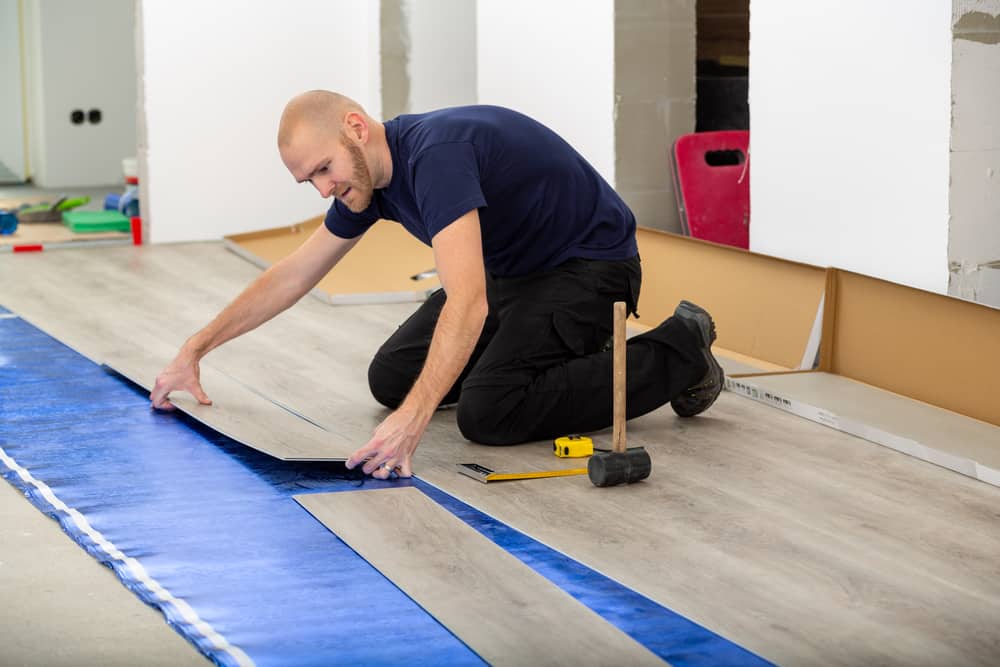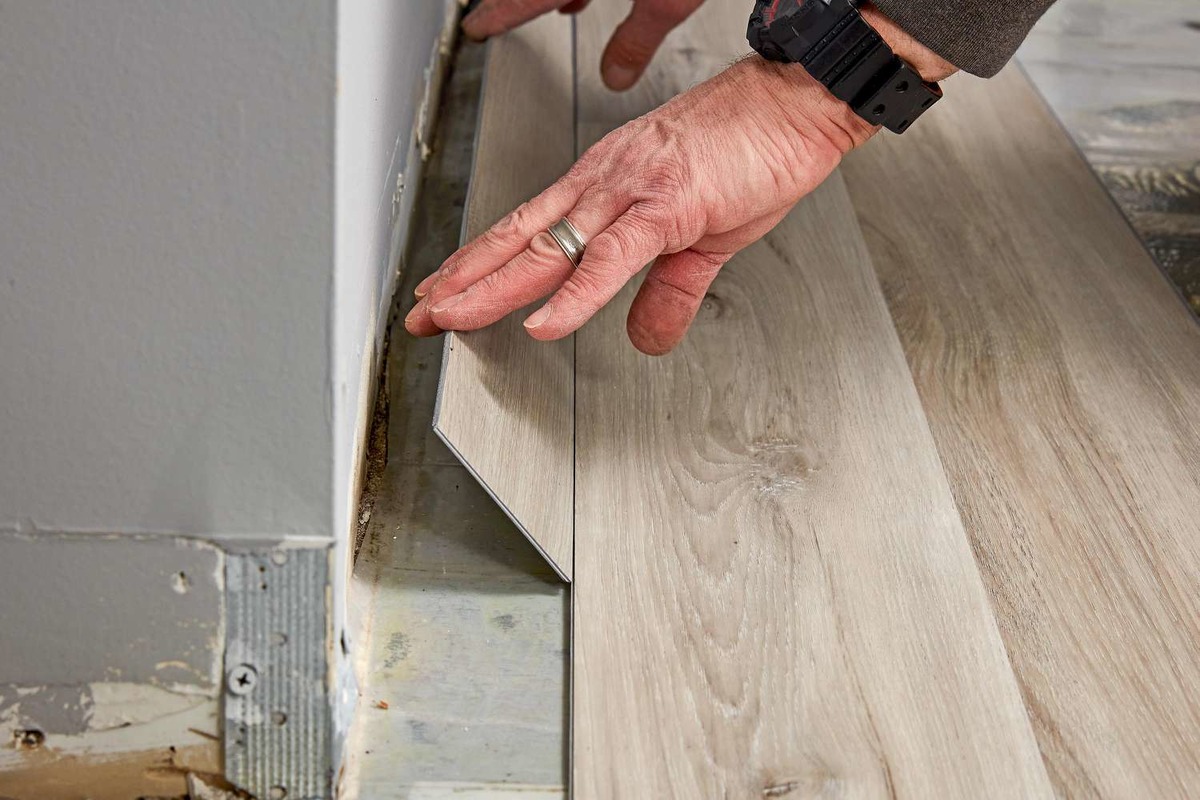Imagine walking into your home, feeling the comforting warmth beneath your feet, and experiencing the luxurious touch of your new flooring. But then, a chilling realization dawns: Did you forget to install underlayment? The answer, like many home improvement dilemmas, is not a simple “yes” or “no.” It depends on several factors, and making the right decision can mean the difference between a satisfying flooring installation and a disappointing one.

Image: jjvs.org
Luxury vinyl flooring, with its stunning looks, durability, and ease of maintenance, has become a popular choice for homeowners. But when considering underlayment, you might be wondering if it’s truly necessary. While luxury vinyl is designed to be resilient, underlayment can provide an extra layer of protection and enhance its performance and longevity. Let’s delve into the world of underlayment and explore its impact on your luxury vinyl flooring experience.
Understanding Luxury Vinyl Flooring and its Benefits
Luxury vinyl flooring, often referred to as LVP (Luxury Vinyl Plank) or LVT (Luxury Vinyl Tile), has revolutionized the flooring industry. It mimics the look and feel of natural materials like hardwood, stone, and tile, offering stunning aesthetics without the hefty price tag or demanding maintenance. Here’s a closer look at its advantages:
- Stunning Aesthetics: LVP/LVT comes in a wide range of colors, patterns, and textures, allowing you to create a unique and stunning look for your space.
- Durability and Wear Resistance: It’s built to withstand heavy foot traffic, scratches, and dents, making it ideal for busy households and high-traffic areas.
- Water Resistance: Luxury vinyl excels in moisture-prone environments, making it suitable for kitchens, bathrooms, and basements.
- Easy Maintenance: Keeping LVP/LVT clean is a breeze, requiring only regular sweeping and occasional mopping.
- Cost-Effectiveness: While it might be a bit pricier than traditional vinyl, its long lifespan and minimal maintenance requirements make it a worthwhile investment.
The Role of Underlayment: Unveiling its Hidden Benefits
Underlayment, the unsung hero of flooring installation, is a thin layer of cushioning material placed beneath your luxury vinyl flooring. It’s often overlooked, but its impact goes beyond aesthetics. Here’s a breakdown of its key contributions:
- Sound Reduction: One of the most significant benefits, underlayment effectively absorbs sound, creating a quieter and more comfortable living environment. It minimizes the impact of footsteps, reducing noise transfer between floors, which is particularly appealing in multi-level homes.
- Improved Comfort: Underlayment provides a plush and springy feel underfoot, adding an extra layer of comfort and reducing fatigue. This is especially beneficial in areas where you spend prolonged periods standing or walking, such as kitchens and hallways.
- Subfloor Imperfection Mitigation: No subfloor is perfectly level. Underlayment helps to even out minor imperfections in the subfloor, creating a smoother surface for your luxury vinyl flooring. This prevents gaps, unevenness, and premature wear.
- Moisture Protection: Some underlayment options offer a layer of moisture resistance, safeguarding your luxury vinyl flooring from potential subfloor moisture issues. This is especially crucial in areas prone to spills or humidity.
- Increased Durability: Underlayment acts as a shock absorber, protecting your luxury vinyl flooring from impacts and reducing wear and tear. It helps to extend the lifespan of your flooring, even in high-traffic areas.
Is Underlayment Always a Must-Have?
While underlayment brings numerous benefits, it’s not a universal requirement for all luxury vinyl flooring installations. Several factors determine whether it’s necessary, including:
- Subfloor Condition: If your subfloor is perfectly level, smooth, and free from imperfections, underlayment might be less essential. However, even minor imperfections can be magnified by the thin nature of luxury vinyl flooring, making underlayment a wise choice for ensuring optimal performance.
- Existing Flooring: If you’re installing luxury vinyl flooring over existing hard flooring, such as tile or hardwood, underlayment might be less crucial, as the existing flooring will provide some cushioning. However, if you’re installing it over a softer surface like carpet or concrete, underlayment is highly recommended.
- Desired Sound Reduction: If noise reduction is a top priority, underlayment is indispensable. It’s particularly important if you’re installing luxury vinyl flooring in bedrooms, living rooms, or areas where noise transmission is undesirable.
- Traffic Level: For high-traffic areas like entryways, kitchens, and hallways, underlayment is recommended to enhance durability and minimize wear and tear.
- Personal Preferences: Ultimately, the decision to use underlayment often comes down to your personal preferences and the level of comfort and sound reduction you desire.

Image: bcfloors.ca
Types of Underlayment for Luxury Vinyl Flooring
Underlayment comes in various materials, each offering unique properties and benefits. Let’s explore some common options:
- Foam Underlayment: This type is affordable, lightweight, and provides excellent sound absorption. It’s a popular choice for adding comfort and noise reduction.
- Cork Underlayment: Cork offers superior sound absorption and a natural, sustainable option. It also adds a touch of warmth and a distinct, elegant character to your flooring.
- Rubber Underlayment: Rubber is known for its durability and moisture resistance. It’s a great choice for heavy-traffic areas or rooms prone to spills.
- Felt Underlayment: This type is a traditional option, offering a combination of cushioning and sound absorption.
- Composite Underlayment: These combine multiple materials like foam and rubber, providing a balance of features and cost-effectiveness.
Expert Insights and Actionable Tips for Choosing the Right Underlayment
With so many types of underlayment available, choosing the right one for your luxury vinyl flooring project can feel overwhelming. Consult a flooring specialist or a trusted contractor for expert advice. They can help you assess your specific needs, your subfloor condition, and your budget, guiding you toward the optimal underlayment choice.
If you’re considering DIYing your flooring installation, research different types of underlayment and their pros and cons. Pay attention to the specific requirements of your luxury vinyl flooring manufacturer, as they often recommend suitable underlayment options to ensure proper installation and warranty coverage. Remember, a little research can save you time, money, and stress in the long run.
Do I Need Underlayment For Luxury Vinyl Flooring
Conclusion: Making the Wise Decision for Your Luxury Vinyl Flooring
Choosing whether or not to use underlayment for your luxury vinyl flooring is a significant decision that can impact its performance, longevity, and overall satisfaction. While LVP/LVT is a resilient flooring option, underlayment can provide a valuable layer of protection, improve comfort, reduce noise, and enhance its durability. It’s essential to consider factors such as your subfloor condition, traffic level, noise concerns, and personal preferences. Don’t hesitate to consult with a flooring professional for expert guidance and ensure that your luxury vinyl flooring installation meets your expectations for years to come. Happy flooring!





